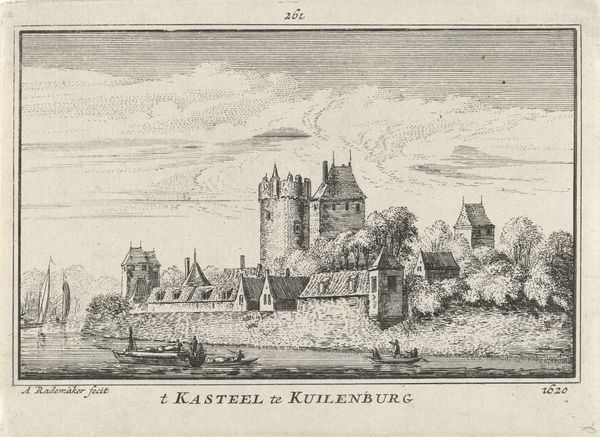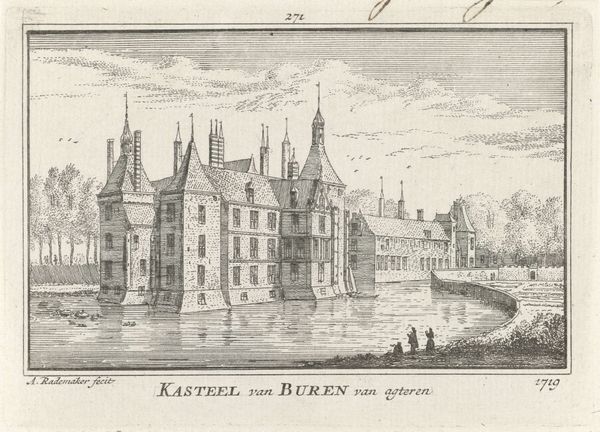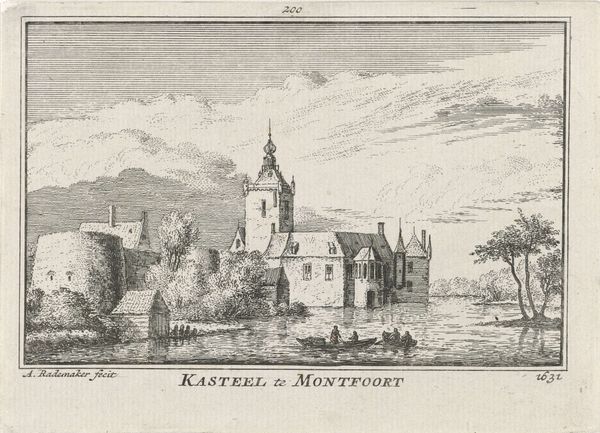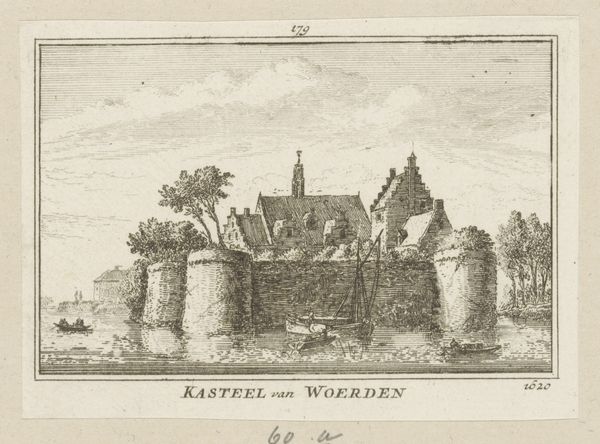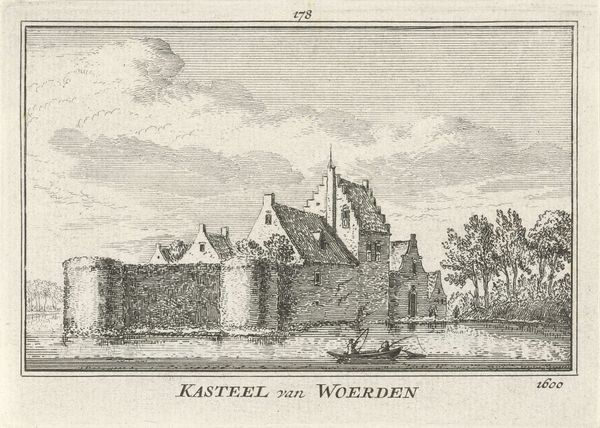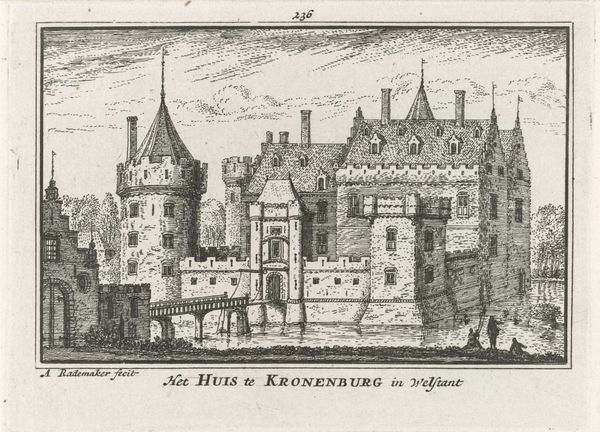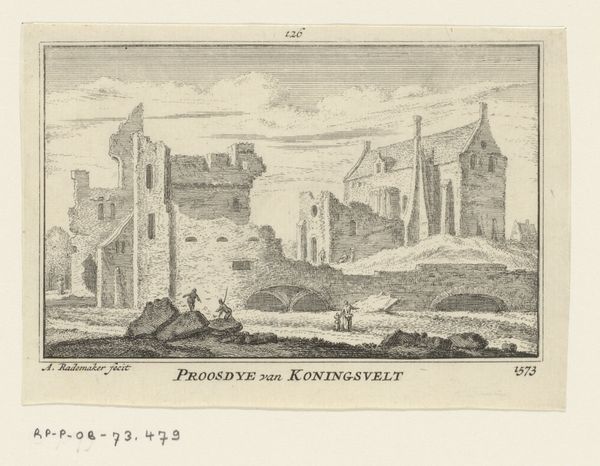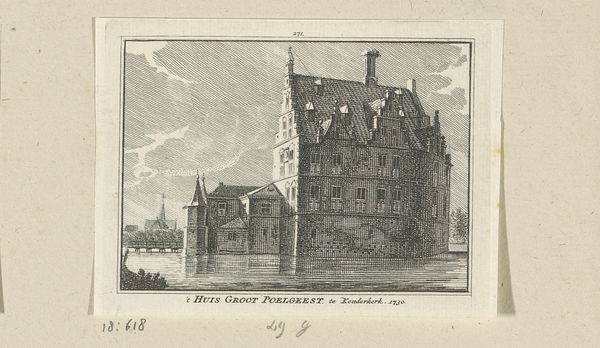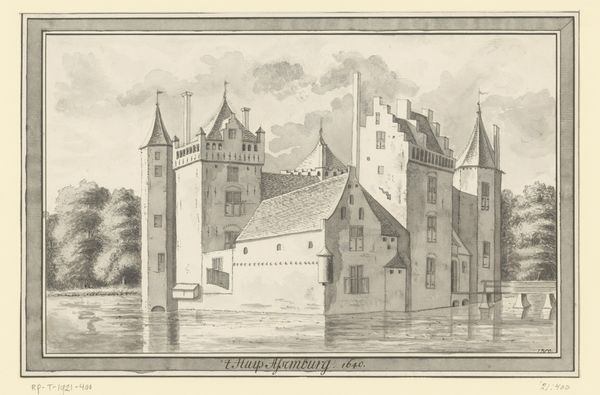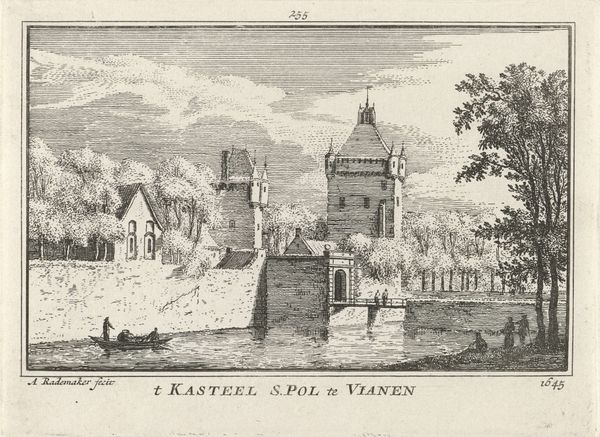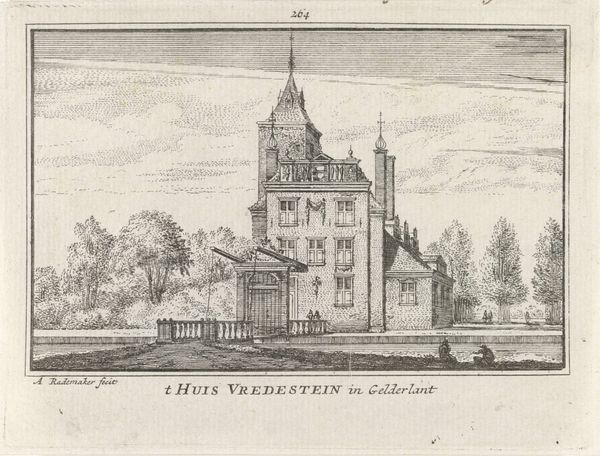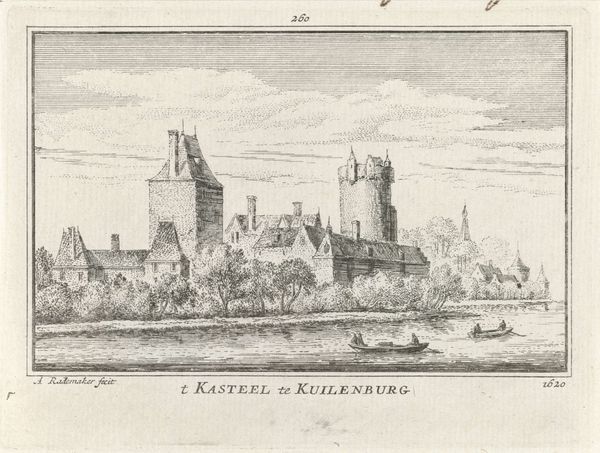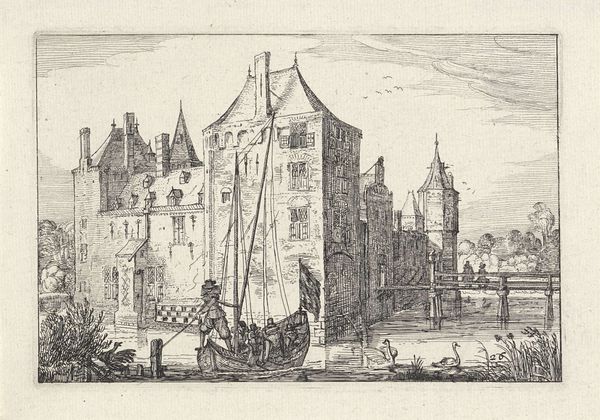
print, etching, engraving
#
baroque
# print
#
etching
#
old engraving style
#
landscape
#
line
#
cityscape
#
engraving
Dimensions: height 80 mm, width 115 mm
Copyright: Rijks Museum: Open Domain
Editor: So, this is "Kasteel Duurstede," an etching by Abraham Rademaker, dating from 1727 to 1733. The intricacy of the lines is remarkable. What layers do you see within this cityscape that might reflect its time? Curator: The level of detail speaks to the values of the Baroque period – a focus on ornate presentation that often served to legitimise power. Here, architecture becomes a tool. Consider how landscape prints like this circulated, acting as both documentation and promotion. What story might this image tell about Dutch identity and aspirations during the early 18th century? Editor: I hadn’t thought about it as a promotional tool. I was mostly stuck on admiring the detail in the engraving. So it is, in a way, communicating prestige and stability? Curator: Exactly. It presents an image of established power, embedded within an idealized landscape. We need to ask whose stories are amplified here and whose are left out? Consider the social and political implications of focusing on such grand architecture. Where are the everyday people, the labour that built and sustained this castle? Editor: That's a great point! I see how this idyllic view could mask some realities of the time. It certainly changes my perspective. I'll definitely think more critically about what is included, and perhaps more importantly, what’s omitted. Curator: Excellent. Now, consider how such imagery influenced contemporary society and how those visual strategies still resonate in representing power today.
Comments
No comments
Be the first to comment and join the conversation on the ultimate creative platform.
